The symptoms of bipolar disorder can take away your ability to enjoy life, and cause you to experience pain on many levels, but when you choose to come to Blue Ridge Mountain Recovery Center, you can begin to build a more promising future.
What is Bipolar Disorder
Learn More About Bipolar Disorder
Bipolar disorder is a mental illness characterized by extreme changes in mood ranging from depression to mania. Individuals suffering with this disorder experience intense emotions that are beyond the normal ups and downs of everyday life. In addition to these major shifts in mood, an individual also experiences unusual changes in energy levels, activity levels, and difficulty in carrying out tasks. During a depression period the individual may feel hopeless, but during a manic phase that same person may feel like they are on top of the world. These severe changes in mood are so intense that it interferes with an individual’s ability to function.
Individuals with Bipolar I disorder experience episodes of mania causing an abnormally elevated and persistent mood and activity level. Bipolar I disorder is defined by manic or mixed episodes that last at least seven days. A depressive episode usually occurs as well typically lasting for about two weeks. However, it is not necessary to have a depressive episode to be diagnosed with Bipolar I disorder.
Bipolar II disorder is characterized by a pattern of depressive episodes that shift back and forth with hypomanic episodes. Hypomania is a milder form of mania, usually lasting only four consecutive days. In between the mood swings associated with the disorder an individual has periods of time where they are able to function normally.
Cyclothymia is a related disorder in which an individual experiences chronic fluctuations in mood that involve both hypomanic and depression symptoms. Although similar to bipolar disorder, the symptoms of cyclothymia are never severe enough to meet the criteria for full blown manic or depressive episodes.
No matter which form of bipolar disorder you’re suffering with, the caring staff at Blue Ridge is ready to help you off the bipolar roller coaster and back on solid ground.
Statistics
Statistics on Bipolar Disorder
It is estimated that the prevalence rate for individuals suffering from Bipolar I disorder is about 0.6%, while Bipolar II disorder has a prevalence rate of 0.8%. The mean age of onset for the first manic, hypomanic, or depressive episode is around 18 years of age for Bipolar I disorder and the mid-20s for Bipolar II disorder. Both genders have about the same prevalence rate with a male-to-female ratio of approximately 1.1:1. Cyclothymic disorder has a prevalence rate of 0.4% – 1% for the general population and a prevalence rate of 3% to 5% in mood disorder clinics. This disorder is equally common among male and females, however more females present for treatment. Cyclothymic disorder typically begins in adolescents or early adulthood.
Causes
Causes of Bipolar Disorder
While the exact cause of bipolar disorder is unknown research has suggested that it is likely a combination of many different factors that plays a role in the development of this disorder. Possible theories include:
Genetic: Research suggests that inherited traits may cause bipolar disorder. Bipolar disorder is more common in individuals who have family members, especially parents or siblings that suffer from the same disorder.
Brain Chemistry: Another theory suggests that an imbalance in hormones or neurotransmitters may cause the development of bipolar disorder.
Biological: Finally, it has been hypothesized that physical changes in the brain structure can cause bipolar disorder. Individuals with bipolar disorder have been known to have physical differences in their brains, for example a smaller prefrontal cortex.
Co-Occurring Disorders
Co-Occurring Disorders and the Complexity of Bipolar Disorder
The most common co-occurring disorders are:
- Anxiety disorders (panic attacks, social anxiety disorder, and specific phobia).
- ADHD
- Depressive disorders
- Disruptive, impulse control, or conduct disorders (intermittent explosive disorder, oppositional defiant disorder, conduct disorder)
- Substance abuse disorders
- Eating disorders
- Sleep disorders
Signs & Symptoms
Signs and Symptoms of Bipolar Disorder
There are a variety of symptoms associated with bipolar disorder. The signs and symptoms will vary depending on the type of bipolar disorder an individual has. Symptoms include:
Manic episode symptoms: (lasting at least a week)
- Euphoria
- Inflated self-esteem
- Rapid speech
- More talkative than usual
- Racing thoughts
- Risky behavior
- Aggressive behavior
- Decreased need for sleep
- Easily distracted
- Agitation or irritation
Hypomanic episode symptoms: (milder level of mania, lasting at least 4 consecutive days)
- Euphoria
- Inflated self-esteem
- Decreased need for sleep
- More talkative than usual
- Racing thoughts
- Aggressive behavior
- Rapid speech
- Risky behavior
- Easily distracted
- Agitation or irritation
Major depression episode symptoms:
- Diminished interest in activities
- Sadness and hopelessness
- Fatigue or lack of energy
- Insomnia or hypersomnia
- Diminished ability to think or concentrate
- Irritability
- Feelings of worthlessness
- Significant weight loss
Effects
Effects of Bipolar Disorder
Bipolar I disorder, Bipolar II disorder, and cyclothymic disorder can cause significant distress and impairment in an individual’s life. Some effects caused by these disorders are:
- Cognitive impairments
- Relationship problems
- Social isolation and loneliness
- Legal problems
- Consequences of risk-taking behaviors
- Incarceration
- Financial problems
- Depression
- Substance abuse and addiction
- Job loss or occupational impairment
- Suicide












